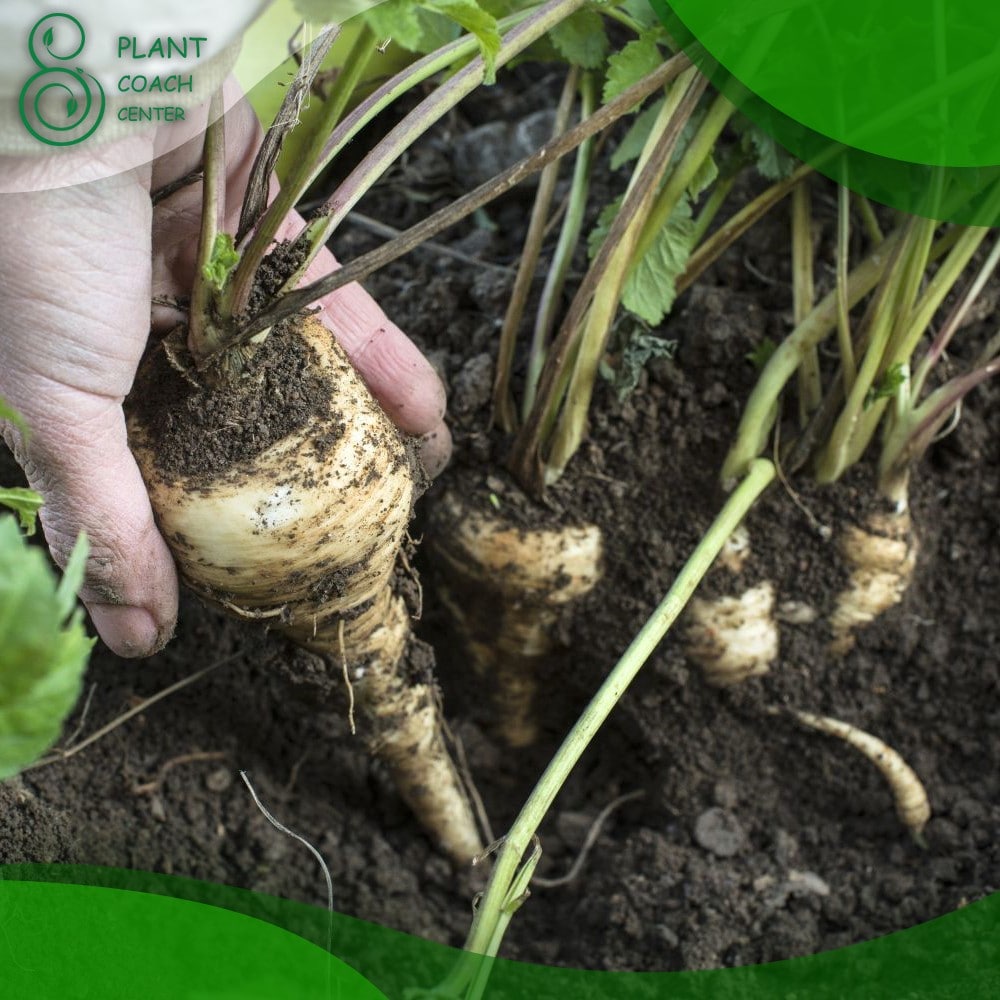Introduction to When to Plant Parsnips
Parsnips (Pastinaca sativa) are root vegetables known for their sweet and nutty flavor, similar to carrots. They are a versatile addition to any garden, offering culinary delights and nutritional benefits. In this comprehensive guide, we will explore the best practices for planting parsnips, ensuring a successful harvest. Let’s delve into the world of parsnips and discover when and how to plant them.
What are Parsnips?
Parsnips belong to the Apiaceae family and are closely related to carrots, celery, and parsley. They have a cream-colored root with a tapered shape and a distinct flavor. Parsnips are rich in dietary fiber, vitamins, and minerals, including potassium, folate, and vitamin C. With their earthy sweetness and versatility in the kitchen, parsnips have gained popularity among home gardeners.
Nutritional Value
Parsnips offer a range of health benefits due to their impressive nutritional profile. They are an excellent source of dietary fiber, which aids digestion and promotes a healthy gut. Additionally, parsnips provide essential vitamins and minerals, including vitamin K, vitamin C, folate, and potassium. Incorporating parsnips into your diet can boost your immune system and support overall well-being.
Culinary Uses
Parsnips are a versatile vegetable that can be used in various culinary creations. They can be roasted, boiled, mashed, or even used in soups and stews. The natural sweetness of parsnips pairs well with savory flavors, making them an ideal ingredient in hearty dishes. They can also be incorporated into cakes, bread, and desserts for a unique twist. The possibilities are endless when it comes to exploring the culinary potential of parsnips.
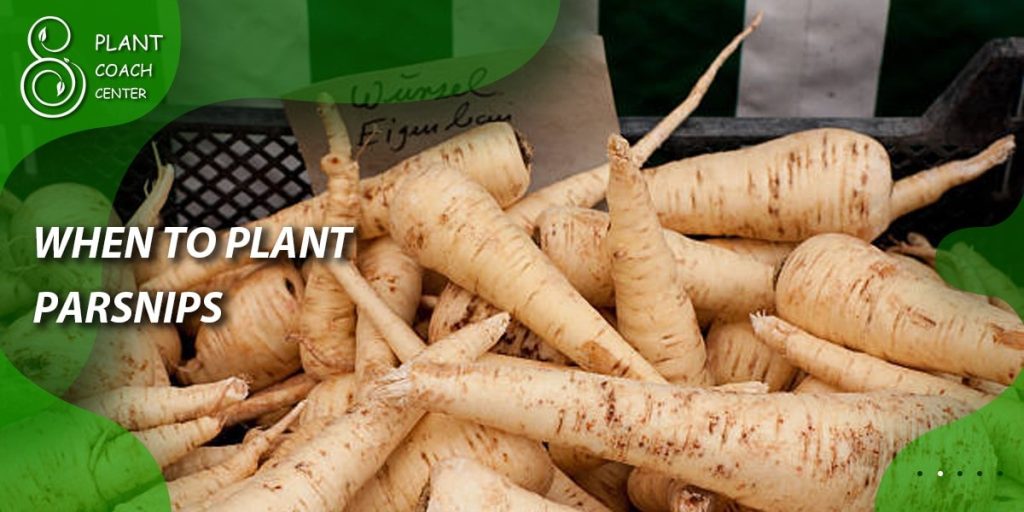
Understanding Parsnip Planting Requirements
To ensure successful growth and a bountiful harvest, it’s important to understand the specific requirements of parsnips. From climate considerations to soil conditions, let’s explore the factors that contribute to optimal parsnip growth.
Climate and Hardiness Zones
Parsnips thrive in cool weather conditions and are considered a cold-season crop. They prefer temperatures ranging from 50°F to 75°F (10°C to 24°C) for optimal growth. While they can tolerate light frost, prolonged exposure to freezing temperatures can damage the roots. It’s important to determine the hardiness zone of your region to identify the suitable planting time for parsnips.
Soil Conditions and pH Levels
Parsnips prefer well-draining soil with a pH level between 5.8 and 7.5. Loose and sandy loam soil with ample organic matter is ideal for their growth. Before planting, ensure the soil is free from rocks, debris, and clumps that may obstruct root development. Proper soil preparation is essential for providing the right environment for parsnips to flourish.
Sunlight Requirements
Parsnips require full sun exposure to thrive. They need a minimum of six to eight hours of direct sunlight each day. Choose a planting location that receives ample sunlight, away from shading trees or structures. Maximizing sun exposure will contribute to healthy foliage growth and robust root development.
Watering Needs
Consistent moisture is crucial for parsnip growth, especially during germination and root development. Keep the soil evenly moist but not waterlogged. Avoid overwatering, as it can cause rotting and other issues. Regularly monitor the soil moisture and adjust your watering schedule accordingly to maintain optimal hydration for the plants.
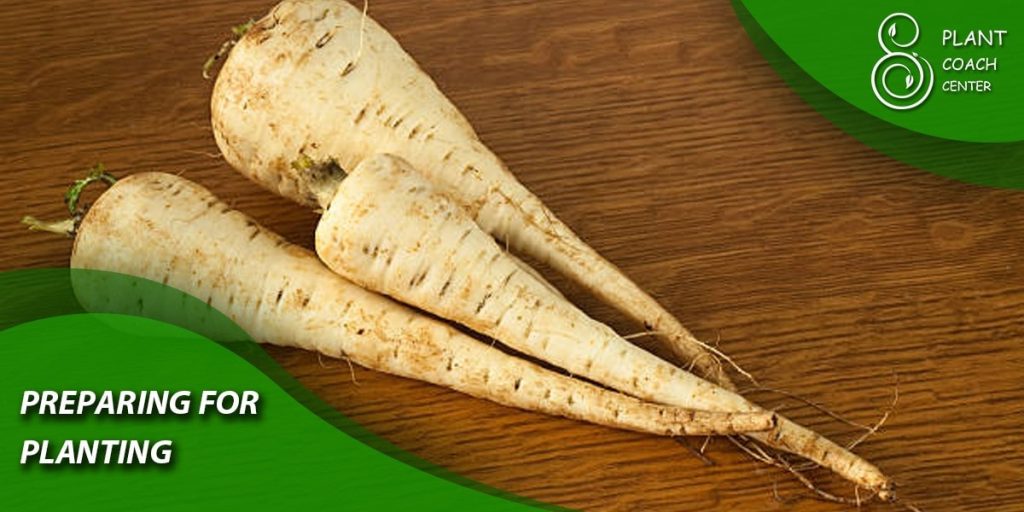
Preparing for Planting
Before planting parsnips, it’s important to make preparations to ensure the best possible growing conditions for your crop. From selecting the right parsnip varieties to preparing the soil, let’s explore the necessary steps to set the stage for successful planting.
Choosing the Right Parsnip Varieties
Parsnips come in various cultivars, each with its own unique characteristics. Consider factors such as flavor, size, and maturity time when selecting a variety. Popular parsnip varieties include ‘Hollow Crown,’ ‘All-American,’ and ‘Gladiator.’ Research different varieties and choose those best suited to your climate and personal preferences.
Seed Selection and Quality
When it comes to parsnip seeds, quality matters. Opt for fresh seeds from reputable seed suppliers or garden centers. Look for seeds with high germination rates and check the packaging or labels for the seed’s viability date. Using fresh and viable seeds significantly increases your chances of successful germination and healthy plant growth.
Seed Storage and Viability
Proper seed storage is essential for maintaining seed viability. Parsnip seeds have a relatively short shelf life compared to some other vegetable seeds. Store the seeds in a cool, dry place in airtight containers or sealed envelopes. Avoid exposing them to moisture, extreme temperatures, or direct sunlight, as these factors can decrease seed viability over time.
Preparing the Garden Bed
Prepare the garden bed well in advance of planting to ensure the soil is ready for the parsnip seeds. Start by clearing any existing vegetation, removing weeds, and loosening the soil with a garden fork or tiller. Remove rocks, debris, and large clumps that may hinder root growth. Level the soil surface and create raised beds or ridges if necessary, as parsnips prefer well-drained soil.
Soil Amendments and Fertilization
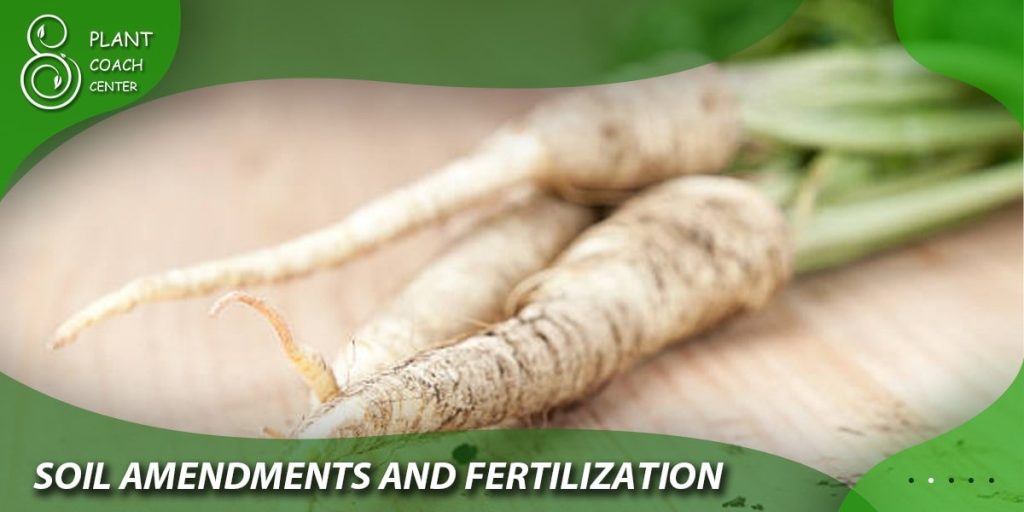
Parsnips thrive in fertile soil enriched with organic matter. Before planting, incorporate compost or well-rotted manure into the soil to improve its nutrient content and structure. This helps retain moisture, enhances soil fertility, and promotes healthy root growth. Conduct a soil test to determine if additional amendments, such as lime or specific nutrients, are required based on the soil’s pH and nutrient levels.
Seed Scarification
Parsnip seeds have a hard outer shell that can delay germination. To enhance germination rates, some gardeners opt for seed scarification. This process involves gently nicking or filing the seed coat to provide a pathway for moisture absorption. While not necessary, scarification can help accelerate germination, especially in regions with cooler or damper soil conditions.
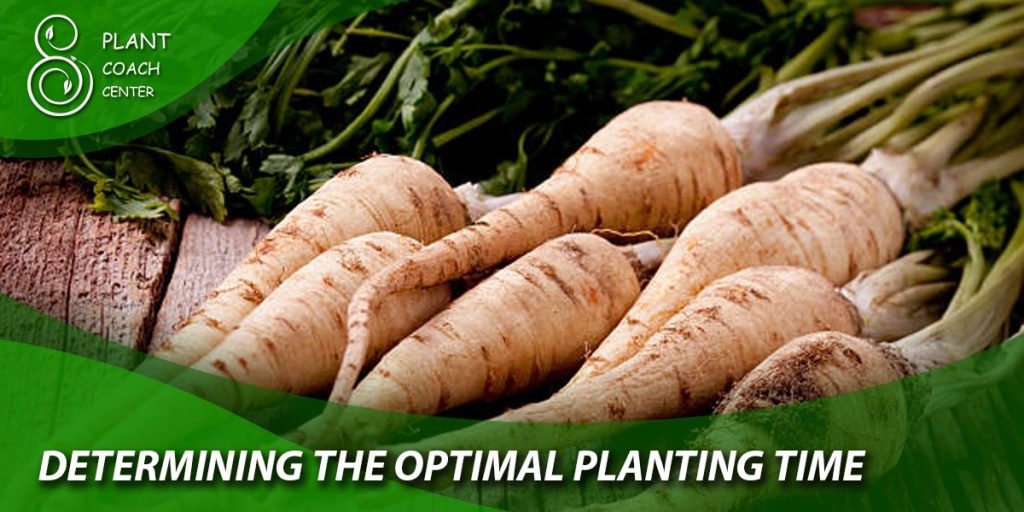
Determining the Optimal Planting Time
Planting parsnips at the right time is crucial for their successful establishment and growth. Factors such as spring or fall planting, frost dates, and weather patterns play a significant role in determining the optimal planting time for parsnips.
Spring Planting
Average Last Frost Date
In regions with distinct seasons, planting parsnips in early spring is a common practice. Consider the average last frost date for your area to determine when it’s safe to sow parsnip seeds. Typically, parsnips can tolerate light frost, but a hard freeze can damage the crop. Avoid planting too early when the soil is still cold and excessively wet.
Soil Temperature Considerations
Parsnip seeds require soil temperatures between 50°F and 65°F (10°C to 18°C) for successful germination. It’s important to ensure that the soil has warmed sufficiently before planting. Use a soil thermometer to monitor the soil temperature, as planting too early in cold soil can lead to poor germination and seed rot.
Weather Patterns and Predictions
Keep an eye on weather patterns and predictions when planning your spring planting. Aim for a period of stable weather conditions, avoiding prolonged cold spells or extreme temperature fluctuations. Consistent, mild temperatures provide the best conditions for parsnip growth during the early stages.
Fall Planting
Average First Frost Date
Fall planting is an excellent option for extending the harvest season and enjoying sweet, mature parsnips. Determine the average first frost date for your region to plan your fall planting schedule. Plant parsnips approximately 14 to 16 weeks before the first expected frost date, allowing them sufficient time to mature before the onset of winter.
Extending the Harvest Season
To maximize the fall harvest, consider using techniques that extend the growing season. Utilize row covers or cold frames to protect the plants from frost and provide a few extra weeks of growth. These protective measures can help you enjoy fresh parsnips well into late fall or even early winter, depending on your climate.
Overwintering Techniques
In regions with mild winters, overwintering parsnips is a possibility. By leaving the parsnips in the ground over winter, you can harvest them in early spring when the flavor intensifies. Apply a thick layer of mulch or straw over the parsnips to protect them from freezing temperatures. Remember to remove the mulch in early spring for new growth to emerge.
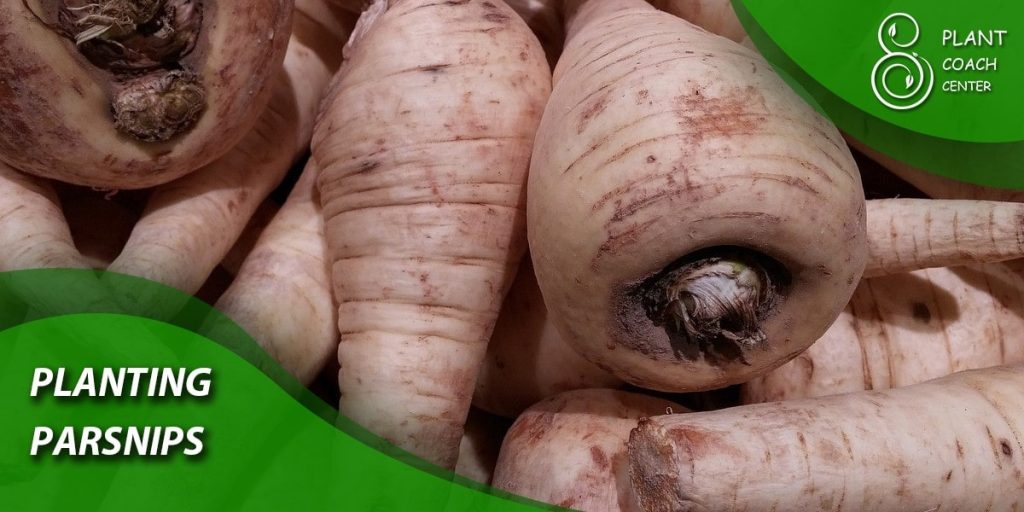
Planting Parsnips: Step-by-Step Guide
Now that you have prepared the soil and determined the optimal planting time, it’s time to sow your parsnip seeds. Follow these step-by-step instructions to ensure a successful planting process and promote healthy parsnip growth.
Step 1: Seed Spacing and Depth
– Create furrows or trenches in the prepared soil, spaced approximately 12 to 18 inches apart.
– Sow the parsnip seeds directly into the furrows, aiming for a spacing of 2 to 3 inches between each seed.
– Plant the seeds at a depth of around ½ to ¾ inches, covering them lightly with soil. Avoid burying the seeds too deeply, as it can hinder germination.
Step 2: Watering and Moisture Management
– After planting, water the soil thoroughly but gently. Ensure the soil is evenly moist but not waterlogged, as excessive moisture can cause rotting.
– Monitor the soil moisture consistently throughout the germination period and adjust watering as needed to maintain optimal moisture levels.
– Be mindful of dry spells or extended periods of hot weather, as parsnips require consistent moisture for healthy growth.
Step 3: Thinning the Seedlings
– Once the parsnip seedlings emerge and develop their first true leaves, thin them to provide adequate space for root development.
– Thin the seedlings to a spacing of 4 to 6 inches apart, removing the weaker or overcrowded plants. This allows the remaining seedlings to grow into robust plants.
Step 4: Weed Control
– Regularly monitor the planting area for weed growth and promptly remove any weeds that compete with the parsnip plants for nutrients and moisture.
– Be cautious when weeding not to disturb or damage the shallow root system of the parsnips. Hand-weeding or using a small hoe can be effective weed control methods.
Step 5: Mulching
– Apply a layer of organic mulch around the parsnip plants once they have established and are a few inches tall.
– Mulching helps suppress weed growth, conserve soil moisture, and maintain cooler soil temperatures. Use straw, wood chips, or compost as mulch materials.
Step 6: Continued Care and Maintenance
– Regularly monitor the growth and overall health of the parsnip plants. Address any signs of pests, diseases, or nutrient deficiencies promptly.
– Keep the planting area well-watered, especially during dry periods or prolonged heatwaves.
– Avoid over-fertilizing parsnips, as excessive nitrogen can result in lush foliage growth but stunted root development. If needed, apply a balanced fertilizer according to soil test recommendations.
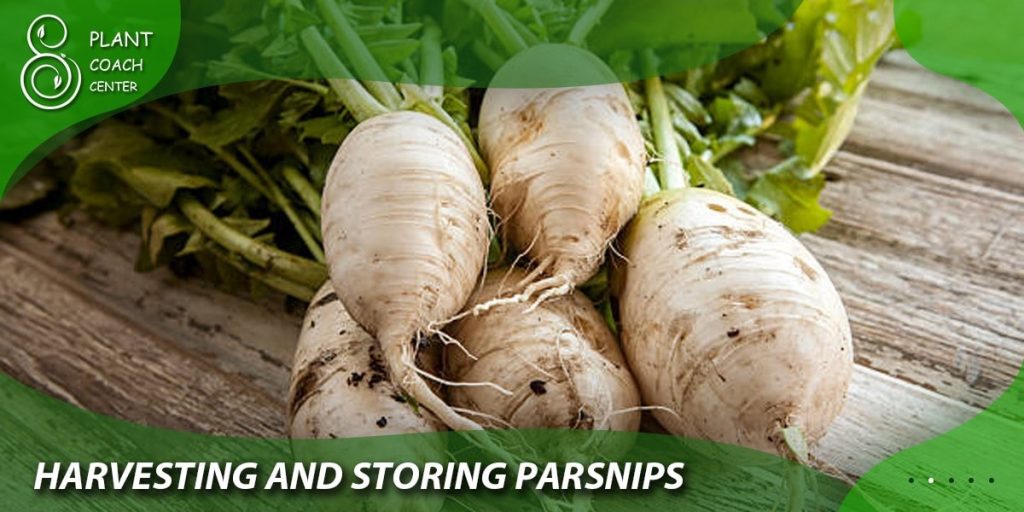
Harvesting and Storing Parsnips
After patiently tending to your parsnip plants, it’s time to reap the rewards of your efforts. Knowing when and how to harvest parsnips, as well as proper storage techniques, ensures that you can enjoy their sweet, earthy flavors for an extended period.
Harvesting Time
– Parsnips typically take around 90 to 120 days to reach maturity, depending on the variety and growing conditions. Refer to the seed packet or variety-specific information for an estimate of the maturity time.
– Harvest parsnips when they have reached their desired size and the foliage starts to yellow and die back. This usually occurs in late fall or early winter for fall-planted parsnips.
– To assess the size, gently dig around the base of the plants and lift a few parsnips to inspect their size. They should have a firm texture and a diameter of about 1 to 2 inches.
Harvesting Technique
– Use a garden fork or shovel to gently loosen the soil around the parsnips, taking care not to damage the roots.
– Lift the parsnips out of the ground, grasping the foliage near the crown and pulling them upward. Avoid pulling on the tops alone, as they can break off, leaving the roots in the ground.
– Shake off excess soil and trim off any side roots or foliage, leaving about an inch of stem intact for easier handling.
Storing Fresh Parsnips
– For short-term storage, brush off excess soil and place the freshly harvested parsnips in a perforated plastic bag or a container lined with damp paper towels.
– Store them in the refrigerator’s vegetable drawer, where the temperature is cool and humidity is moderate. Fresh parsnips can last for a few weeks under these conditions.
Storing Parsnips for Long-Term Use
– For long-term storage, parsnips can be stored in a cool, dark, and well-ventilated location. Ideal storage temperatures range from 32°F to 40°F (0°C to 4°C), with a humidity level of around 90 to 95%.
– Remove excess soil, but do not wash the parsnips before storage, as moisture can cause rot. Store them in boxes or crates filled with damp sand, sawdust, or peat moss to maintain humidity and prevent shriveling.
– Inspect stored parsnips regularly and remove any spoiled or diseased ones to prevent them from affecting the others.
Culinary Tips
– Parsnips offer a sweet and nutty flavor that complements various dishes. They can be roasted, boiled, mashed, or used in soups, stews, and casseroles.
– Before cooking, peel the outer skin of the parsnips to reveal the tender flesh beneath.
– You can also enjoy parsnips raw by shredding or thinly slicing them for salads or slaws.
– Experiment with different cooking methods and flavor pairings to discover your favorite way of enjoying these versatile root vegetables.
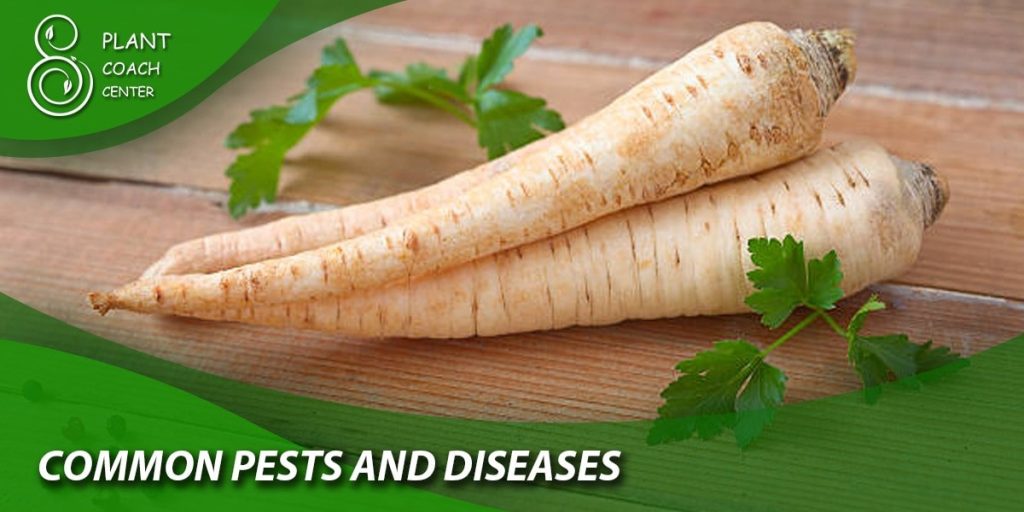
Common Pests and Diseases
While parsnips are generally resilient, they can still be susceptible to certain pests and diseases. Being aware of these common issues and implementing preventive measures can help ensure the health and productivity of your parsnip crop.
Pests:
– Carrot Fly: Carrot fly can affect parsnips as they belong to the same family. These small flies lay their eggs near the base of the plants, and the resulting larvae feed on the roots. To prevent infestations, use physical barriers like fine mesh or floating row covers to keep the flies away from the plants.
– Slugs and Snails: Slugs and snails are common pests that can damage parsnip foliage. Regularly inspect your plants, handpick any visible pests, and use organic slug control methods like beer traps, copper tape, or diatomaceous earth to deter them.
– Root Knot Nematodes: These microscopic worms can cause galls and deformities on parsnip roots, stunting their growth. Crop rotation, soil solarization, and using nematode-resistant varieties can help manage nematode populations.
Diseases:
– Cavity Spot: Cavity spot is a common fungal disease that causes sunken, brown lesions on parsnip roots. To prevent this disease, ensure proper soil drainage, avoid over-watering, and maintain consistent soil moisture levels.
– Powdery Mildew: Powdery mildew is a fungal disease that forms a white, powdery coating on the leaves. Adequate spacing between plants, good air circulation, and avoiding overhead watering can help prevent powdery mildew.
– Leaf Blight: Leaf blight causes browning, wilting, and necrotic spots on parsnip foliage. Practice crop rotation and avoid overhead watering to reduce the risk of leaf blight.
Companion Planting for Pest Control:
Companion planting can help deter pests and promote a healthier growing environment for parsnips. Consider planting the following companions alongside your parsnips:
– Onions and Garlic: These aromatic plants can help repel pests like carrot fly and deter fungal diseases.
– Marigolds: The strong scent of marigolds can deter pests like nematodes and repel aphids.
– Nasturtiums: Nasturtiums attract aphids away from parsnips, acting as a sacrificial companion plant.
Conclusion
Parsnips are a versatile and nutritious root vegetable that can be enjoyed in various culinary creations. By planting and tending to your parsnip crop with care, you can savor the rewards of homegrown produce while adding a delicious and healthy ingredient to your meals.


